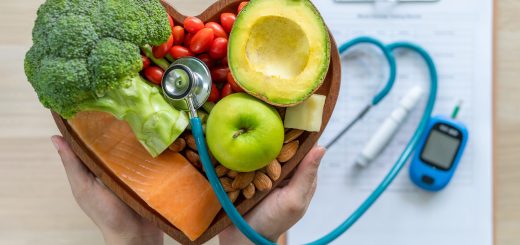Navigating the Grocery Aisles: A Practical Guide to Smart and Healthy Food Choices
The grocery store is a labyrinth of choices, a place where health-conscious decisions meet the tantalizing allure of convenience and cravings. Navigating the aisles with a keen eye for smart and healthy food choices can be the key to fostering a balanced and nourishing diet. In this blog, we embark on a journey through the grocery store, unraveling practical tips to empower you to make informed decisions that support your well-being.
-
Start with a Plan:
Before setting foot in the grocery store, arm yourself with a plan. Take a few moments to outline your meals for the week, considering a balance of protein, fruits, vegetables, whole grains, and dairy or dairy alternatives. Planning ahead not only streamlines your shopping experience but also helps you resist the temptation of impulse buys that may not align with your health goals.
-
Shop the Perimeter:
A golden rule of healthy grocery shopping is to focus on the perimeter of the store. Fresh produce, lean proteins, dairy, and whole grains often reside along the outer edges. This strategy naturally directs you towards nutrient-dense options and minimizes exposure to heavily processed and packaged foods typically found in the central aisles.
-
Fill Your Cart with Color:
A vibrant palette of colors in your cart often indicates a diverse and nutrient-rich selection. Aim to include a spectrum of fruits and vegetables in different hues, as different colors represent various vitamins, minerals, and antioxidants. Whether it’s leafy greens, berries, bell peppers, or sweet potatoes, a colorful cart is a sign of a well-rounded and nourishing diet.
-
Decode Food Labels:
The labels on packaged foods can be a source of confusion, but decoding them is crucial for making informed choices. Pay attention to the nutrition facts panel, looking for items with lower added sugars, saturated fats, and sodium. Additionally, scrutinize ingredient lists, opting for products with recognizable and minimally processed ingredients.
-
Embrace Whole Grains:
Navigate towards the grain section with a focus on whole grains. Whole grains, such as quinoa, brown rice, and oats, provide essential nutrients and fiber. Choose whole grain options for bread, pasta, and cereals to fuel your body with sustained energy and support digestive health.
-
Choose Lean Proteins:
Protein is a cornerstone of a healthy diet, and the grocery store offers a plethora of options. Opt for lean protein sources such as poultry, fish, beans, lentils, and tofu. Limit processed meats and choose fresh, minimally processed alternatives for a protein-packed, heart-healthy diet.
-
Beware of Sneaky Sugars:
Sugar hides in unexpected places, from seemingly innocent yogurt to savory sauces. Keep an eye out for added sugars on food labels, and choose products with little or no added sweeteners. Consider alternatives like fresh fruits or unsweetened options to satisfy your sweet tooth without compromising on health.
-
Prioritize Healthy Fats:
Not all fats are created equal, and incorporating healthy fats into your diet is essential. Look for sources of unsaturated fats, such as avocados, nuts, seeds, and olive oil. These fats support heart health and can be a flavorful addition to your meals.
-
Hydrate with Intention:
The beverage aisle can be a temptation-filled zone with sugary sodas and calorie-laden drinks. Make water your primary beverage of choice and consider unsweetened herbal teas. If you crave flavor, infuse your water with slices of citrus, cucumber, or herbs for a refreshing twist.
-
Mindful Snacking:
Snacking can make or break your healthy eating goals. Instead of reaching for highly processed snacks, explore nutritious alternatives. Nuts, seeds, fresh fruit, and yogurt are excellent choices that provide both satisfaction and nutritional value. Practice mindful snacking by paying attention to portion sizes and savoring each bite.
-
Frozen and Canned Goods:
The frozen and canned aisles can be treasure troves of convenience without sacrificing nutrition. Frozen fruits and vegetables are often as nutrient-rich as fresh ones, and canned beans, fish, and tomatoes are convenient staples with a long shelf life. Just be vigilant about added salts and sugars in canned goods, and opt for options with minimal additives.

-
Shop Seasonally:
Choosing seasonal produce not only supports local agriculture but also ensures that you’re getting the freshest and most flavorful ingredients. Seasonal fruits and vegetables are often more budget-friendly and packed with peak nutritional value.
In the hustle and bustle of the grocery store, making smart and healthy food choices is not only achievable but also empowering. Armed with a plan, a keen eye for labels, and a commitment to embracing whole, nutrient-dense foods, you can transform your grocery shopping experience into a journey towards optimal health.
Remember, the choices you make in the grocery aisles lay the foundation for your overall well-being. By prioritizing fresh, colorful, and minimally processed options, you’re not just filling your cart; you’re fueling your body with the nourishment it deserves. So, the next time you navigate the grocery aisles, let your choices be a celebration of health, flavor, and the vitality that comes from making informed and conscious decisions.



